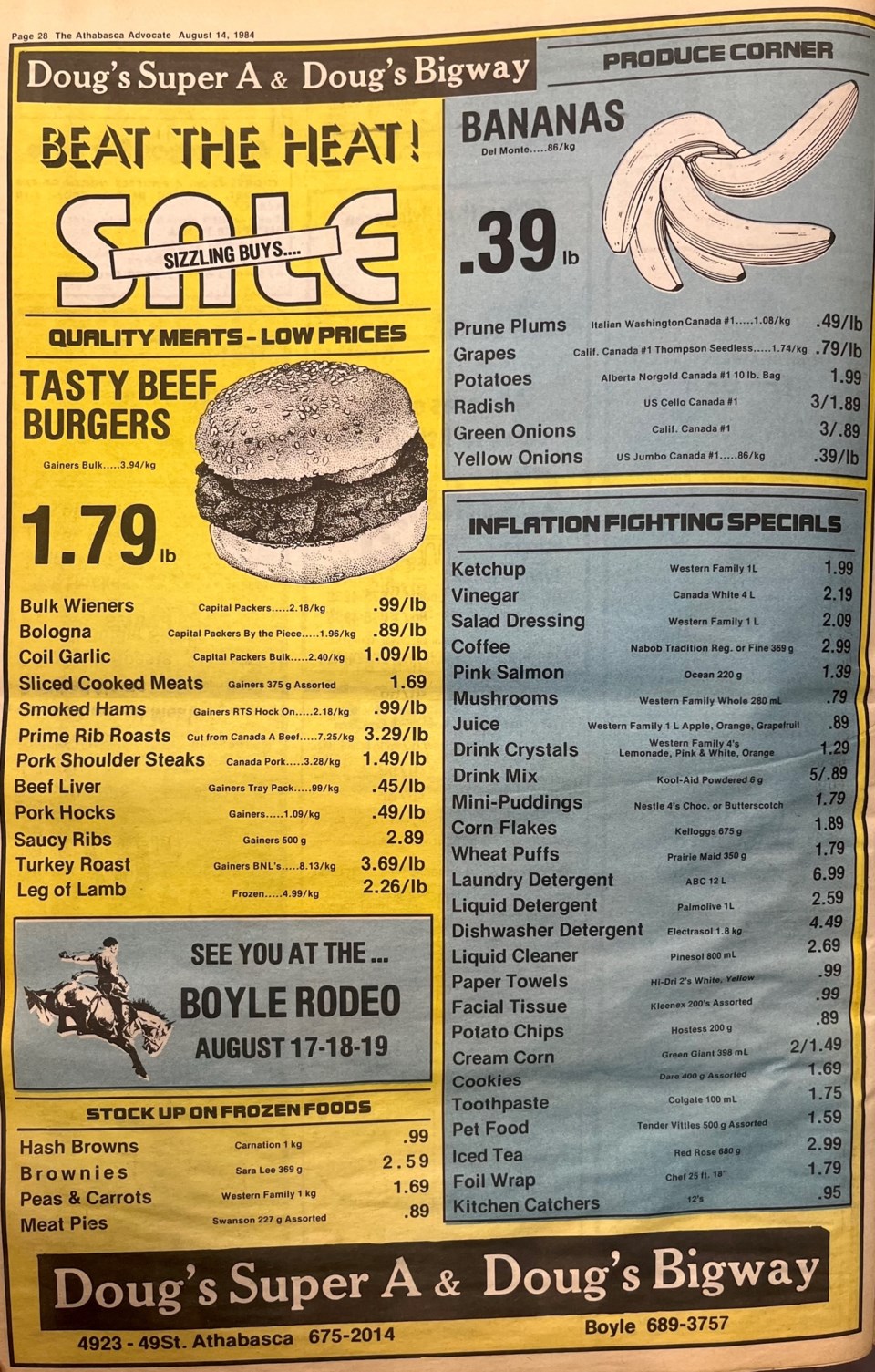In a review of house and grocery ads within the Advocate’s newspapers from the past four decades, the effects of inflation on the prices of day-to-day products is obvious, resulting in an extreme change in the cost-of-living that is difficult for many of today’s Athabascans to ignore.
In 1984, 2004 and 2024, three homes with similar value were all set at drastically different prices.
In 1984, a four bedroom, two bath with an attached garage in Athabasca would go for around $95,000. A similar home (with three baths instead of two) was priced at around $150,000 in 2004. Nowadays, a comparable town house often comes with a price tag up to $350,000.
A rise in the price of groceries over the years is also noticeable. Back in 1984, fresh produce such as grapes could be bought with only a handful of change. With Alberta’s minimum wage set at $3.80/hour, a pound of seedless grapes priced at $0.79 would equate to 21 per cent of an hour's pay in 1984.
This rate would decrease to 17 per cent by 2004, as the cost of grapes only increased slightly to $0.98/lb, while minimum wage was raised substantially to $5.90/hour.
Flash forward another 20 years to present day, and many Albertans cringe at the cost of grapes now at $3.99/lb. This price makes up 27 per cent of Alberta's minimum hourly pay in 2024.
Today, deli meats are well recognized as a target for rising prices. In early August of 1984, 100 grams of turkey meat could be bought for only $0.81. By 2004 the price would climb its way up to $1.39/100g.
According to inflationcalculator.ca with data from Statistics Canada, this price is well aligned with a 77 per cent inflation rate in Alberta from 1984 to 2004.
Comparatively, turkey prices today have far exceeded the rate of inflation. Calculated at a 179 per cent inflation rate from 1984 to 2024, turkey prices consistent with the rate would cost $2.26/100g. In reality, the price of this item runs closer to four dollars per 100 grams.
Like turkey prices, many grocery items have surpassed the rate of inflation in Alberta.



